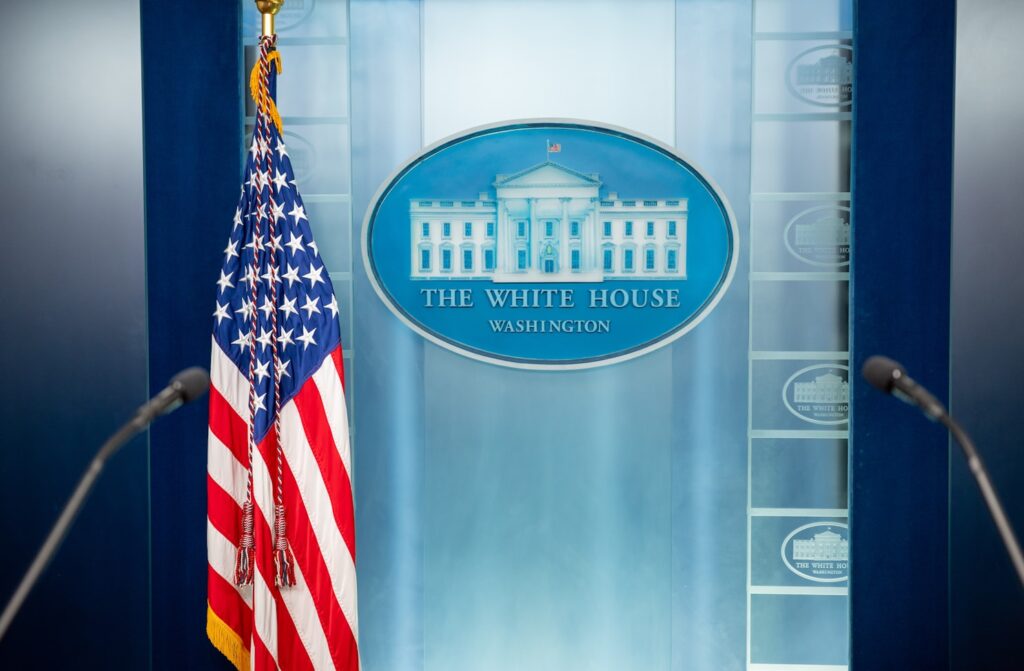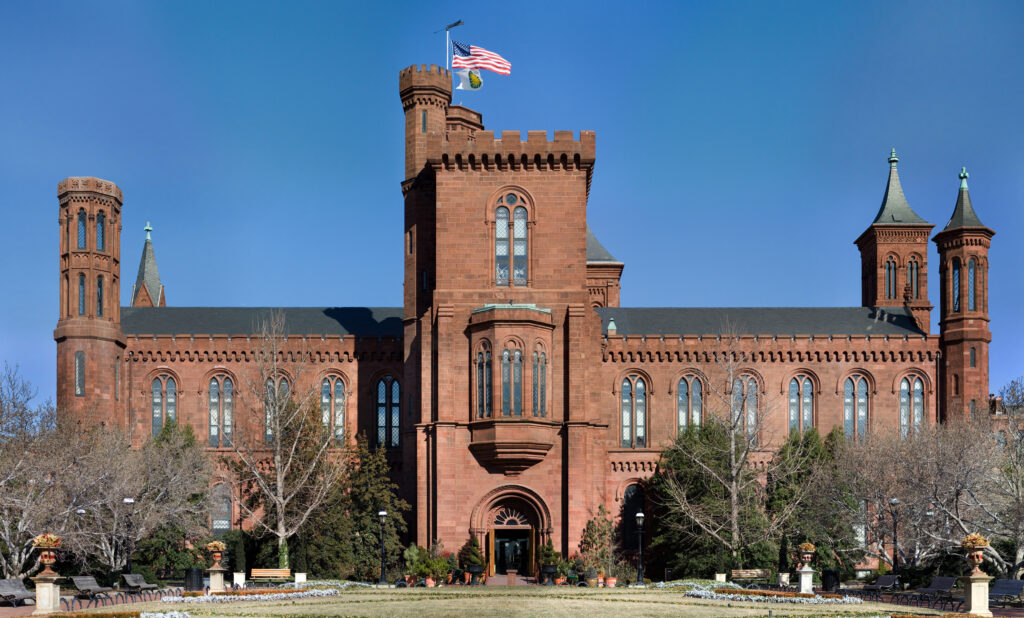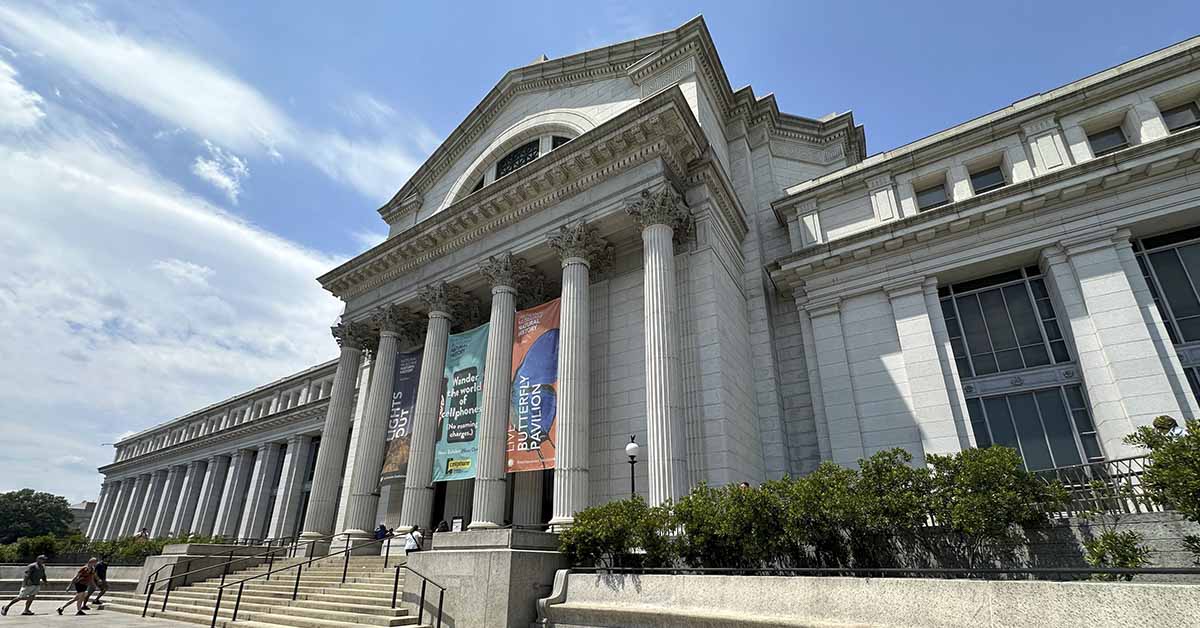The White House announced on Tuesday, August 12, that it will review eight Smithsonian museums to ensure all exhibits align with President Trump’s view of American history. The review covers some of America’s most popular museums and happens before the country’s 250th anniversary next year, in 2026.
As part of this effort, in a letter to Smithsonian Secretary Lonnie Bunch III, Senior Associate Staff Secretary Lindsey Halligan, Domestic Policy Council Director Vince Haley, and Office of Management and Budget Director Russ Vought outlined a review process to align the institution with the executive order “Restoring Truth and Sanity to American History.”
Details of the eight-museum review process

According to the letter, the administration will begin by reviewing exhibits at these eight major Smithsonian museums. The National Museum of American History, the National Museum of African American History and Culture, the National Air and Space Museum, and the National Museum of Natural History. The review also covers the National Museum of the American Indian, the Smithsonian American Art Museum, the National Portrait Gallery, and the Hirshhorn Museum and Sculpture Garden.
White House officials will examine all exhibition text and wall displays, as well as websites, educational materials, and social media content, assessing tone, historical framing, and whether exhibits reflect American ideals. The review also extends to curatorial processes, staff interviews, how collections are used, and the internal guidelines that shape exhibit development.
As part of a structured timeline, the museums face a compliance schedule. Within 30 days, they must provide current exhibition content, America 250 draft plans, and internal guidelines. Including proposed artwork, descriptive placards, exhibition catalogs, and lists of invited speakers. At 75 days, additional documentation is due. Officials will then begin scheduling voluntary interviews with curators and senior staff.
By the 120-day mark, museums should start making content corrections where needed. Replace divisive or ideologically driven language with unifying, historically accurate, and constructive descriptions across public materials. The administration expects a final report in early 2026.
Executive order and high-level oversight
President Trump signed Executive Order 14253, Restoring Truth and Sanity to American History, in March. The order says the Smithsonian has come under the influence of a divisive, race-centered ideology and directs a review of museum content and practices. Furthermore, Vice President JD Vance has been assigned to help remove what the administration calls improper ideology from the institutions.
Senior Associate Staff Secretary Lindsey Halligan signed the review letter and set out the administration’s approach. “I would say that improper ideology is weaponizing history,” she told a national news outlet. She added, “This is about preserving trust in one of our most cherished institutions. The Smithsonian museums and exhibits should be accurate, patriotic, and enlightening, ensuring they remain places of learning, wonder, and national pride for generations to come.”
Recent decisions fuel ongoing tensions
Recent museum decisions have stirred tension over what belongs on public display. A national news outlet reported that staff removed at least 32 artifacts from the National Museum of African American History and Culture. Including Harriet Tubman’s book of hymns and Frederick Douglass’s memoir. The Smithsonian has not explained the removals.
Last month, references to Trump’s two impeachments were briefly omitted from a presidential exhibit and later restored. Museum officials said the change reflected presentation standards, not political pressure.
In May, Trump said he was removing the director of a major Smithsonian museum, calling her highly partisan. She later resigned. The institution stressed that only the Smithsonian Secretary has authority over personnel decisions. Around the same time, artist Amy Sherald canceled an upcoming exhibition after a dispute over her painting of a transgender woman.
Smithsonian’s response to federal review
The Smithsonian defended its approach in a statement, saying “The Smithsonian’s work is grounded in scholarly excellence and rigorous research”, and “We focus on accurate, factual presentation of history.” They added, “We are reviewing the letter with this commitment in mind,” and said it will continue to collaborate constructively with the White House, Congress, and the Board of Regents.
The Congressional Black Caucus called the effort “whitewashing our nation’s history” and described the approach as “blatantly racist.” Democratic lawmakers said Trump is undermining institutional independence and using cultural institutions to expand political power.
The review fits a broader effort by Trump to reshape cultural institutions in his second term. He has taken similar steps at the Kennedy Center for the Performing Arts, where he named himself chairman and dismissed the bipartisan board of trustees. He has also pledged that no anti-American propaganda will be presented there.
Smithsonian’s role and what comes next

The Smithsonian is the world’s largest museum complex, operating 21 museums with diverse exhibits, 14 education centers, and the National Zoo. Nearly 17 million people visited Smithsonian sites last year. Most locations offer free admission to families, students, and international visitors.
A new executive order from the Trump administration increases executive-branch involvement in museum operations and directs a review meant to “restore the Smithsonian Institution to its rightful place as a symbol of inspiration and American greatness.” The order frames the review as a way to spark young minds, honor American history and innovation, and build pride across the country.
The timing is intentional. The review ties directly to next year’s 250th anniversary and seeks to influence how the nation presents its history for that milestone. Museums must appoint liaison staff and coordinate with the White House Salute to America 250 Task Force. The administration has said Phase II could expand the review to additional institutions, and how museums respond now will likely shape future federal oversight of cultural organizations.
Read More: Mandated Treatment & Forced Removal: Trump’s New Homelessness Policy Divides Nation

